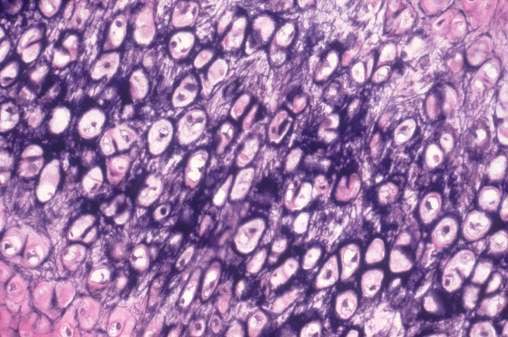After a soldier lost her ear in a car crash, Army doctors were able to create a new one and place it inside her arm as part of a total ear reconstruction.
On Monday, US Army surgeons announced that they had successfully transplanted a soldier's ear onto her head after "growing" it inside her forearm.

US Army photo / Via army.mil
In the total ear reconstruction, plastic surgeons at William Beaumont Army Medical Center in El Paso, Texas, used cartilage from the woman's ribs to create the ear and placed it under the skin of her forearm so it could form blood vessels.
The 21-year-old patient is now on the road to recovery, according to a statement from the hospital.
Two years ago, Private Shamika Burrage nearly died after being ejected from her vehicle during a car crash. Burrage, then 19, was driving back with her cousin to Fort Bliss, Texas, from her native Mississippi when a front tire blew out.
The car skidded 700 feet and flipped multiple times before Burrage flew out of the car. Her cousin, eight months pregnant at the time, only suffered minor injuries — but Burrage had compression fractures in her spine, road rash, and head injuries. According to her doctors, if she had gone 30 more minutes without medical attention, she would've died from blood loss.
"I was on the ground, I just looked up and [her cousin] was right there. Then I remember people walking up to us, asking if we were okay and then I blacked out," Burrage said in the statement. When she woke up in the hospital, her entire left ear was gone.
Doctors placed the ear-shaped tissue graft under a flap of skin, allowing it to form blood vessels before transplantation.

Biophoto Associates / Getty Images / Via gettyimages.com
Initially, Burrage wanted to get a prosthetic ear to avoid more scarring and was hesitant because the reconstruction would involve more surgeries and recovery time. "I was just scared at first but wanted to see what he could do."
"The whole goal is by the time she's done with all this, it looks good, it's sensate, and in five years if somebody doesn't know her they won't notice. [...] As a young active-duty soldier, they deserve the best reconstruction they can get." Lt. Col. Owen Johnson III, chief of plastic and reconstructive surgery at William Beaumont, said in the statement.
The surgeons carved the new ear out of cartilage harvested from her ribs, then opened a flap of skin on the forearm. They placed the cartilage inside so new blood vessels could form in the cartilage, which is necessary for a successful transplant.
"[The ear] will have fresh arteries, fresh veins, and even a fresh nerve so she'll be able to feel it," said Johnson. The skin flap from her forearm will also cover some of the scar tissue around Burrage's jawline and ear from the accident.
Although the transplant was intended to replace her external ear, which plays a relatively small role in hearing compared with the inner ear, the treatment did help her regain the ability to hear sound.
The surgeons were able to open Burrage's ear canal during the transplant, which had closed due to the trauma from the car accident. With her hearing back and only two surgeries to go, Burrage said she is feeling optimistic about her recovery. "It's been a long process for everything, but I'm back," she said.
Burrage works as a supply clerk with 1st Battalion, 35th Armored Regiment, 2nd Brigade Combat Team, 1st Armored Division.
"Growing" body parts is not a new plastic surgery technique.

The appearance of a transplant growing on or inside another part of the body may look shocking, but this procedure involves many of the same techniques used in routine plastic surgeries.
Surgeons often reconstruct body parts with "autologous tissue," which means they use a portion of skin, muscle, cartilage, or bone harvested from another region of a patient's body. Examples include postmastectomy reconstructive breast surgery and skin grafting for burn victims.
In this case, new external organs like an ear don't actually "grow," but are created from cartilage from elsewhere in the body and then placed in the body for some time before being moved to the new location.
The picture above depicts a man in China whose photo went viral in 2013 after surgeons opted to "grow" a new nose on his forehead after his nose was eaten away by an infection, ABC reports. Doctors used expanders to stretch the skin on his forehead and formed a new nose underneath the skin, using cartilage from his ribs. This allowed enough blood vessels to form so the new nose could be transplanted to the damaged region.
Burrage's case may have been one of the more complicated ear reconstructions performed by Army surgeons, but similar procedures have been done in recent years. In 2012, a woman who lost her ear to cancer received a transplanted ear that was "grown" in her arm for four months.
Str / AFP / Getty Images / Via gettyimages.com
from BuzzFeed - Health https://ift.tt/2rB8vWd
via IFTTT

